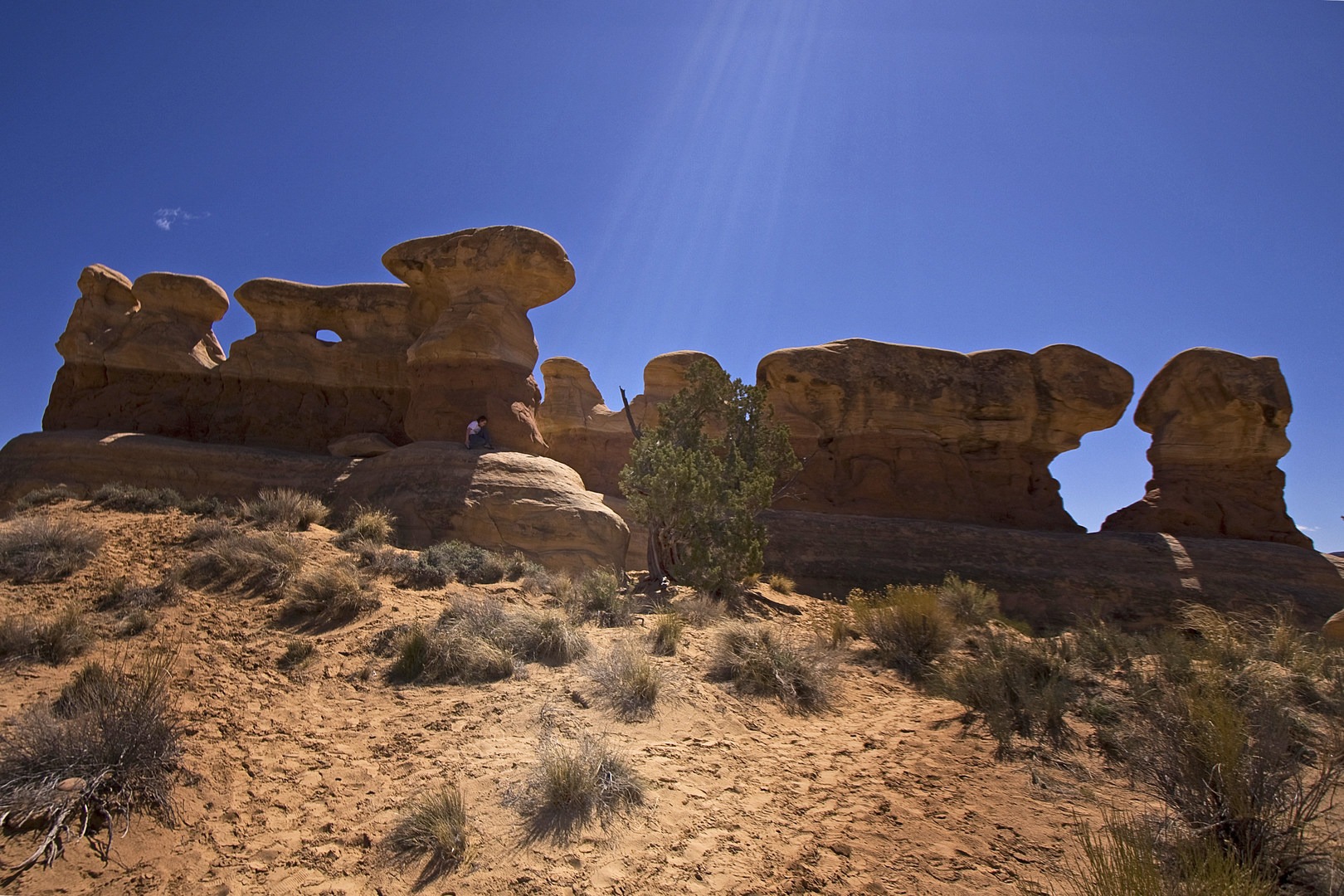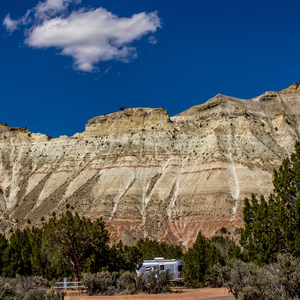You are here
From the Grand Canyon of Arizona all the way to the highest peaks of Bryce Canyon in Utah stretches a massive five-stepped staircase made of eroded stone that happens to be one of the most fascinating areas on the planet. The Grand Staircase is a beautiful display of what water can do to sandstone when given enough time, and it gives outdoor enthusiasts a perfect playground that is light on rules and heavy on wonder.
Nearly 2,000,000 acres of south central Utah were designated a national monument in 1996 by President Clinton under the authority of the Antiquities Act, creating the largest national monument in the country. If there were not already five national parks in Utah, this area could have easily justified a more official designation. Known for its unusual rock structures, epic hikes, slot canyons, desert waterfalls, sweeping vistas, and razor-thin scenic roads, this monument requires a lot more time than people realize. Its remote location and sparse facilities reserve this park for the more adventurous.
Hikes, Slot Canyons, and Parks
- Lower Calf Creek Falls: One of the most famous stops in the monument thanks to its great beauty and ease of access. Located just off of Highway 12, the 3-mile walk takes you to a rare sight in these parts: a large waterfall and swimming hole. The sandy wash can be slow to hike through, but the river brings relief to many people trying to beat the heat.
- Zebra Canyon and Tunnel Slot: The first stop along the Hole in the Rock Road is one of the most photogenic slot canyons in the world. Zebra and Tunnel Slots are thin passages that are barely wide enough for people to pass through and are bathed in gorgeous pastel colors. The sparse sunlight and layers of sandstone are simply breathtaking.
- Devil's Garden: This unusual stop along Hole in the Rock Road is a concentrated set of hoodoos and arches that really boggles the mind. Strange figures and sandstone statues dot the landscape and create a great place where the whole family can enjoy the foreign terrain without having to hike much at all.
- Peek-a-Boo and Spooky Gulch Loop: It's hard to believe that just a bit farther down the road is another set of world-class slot canyons. Even thinner than nearby Zebra and Tunnel slots with a shorter hike, Peek-a-Boo is also a fork of the Coyote Gulch Trail. A small arch and the undulating stone of the slots get visitors from all around to experience these unique desert features.
- Coyote Gulch: One of the great jewels of southern Utah backpacking, Coyote Gulch is chock-full of exciting and beautiful moments. Slot canyons, giant natural bridges, and soaring arches with small desert waterfalls make this a really dynamic tour. It will take a few days, but it is unforgettable.
- Reflection Canyon: Along with Coyote Gulch, Reflection Canyon is one of the best short multi-day hikes in the American Southwest, and it really shows just how many amazing places lie within this monument. Hiking 10 miles each way over the desolate landscape with no trail, you eventually make your way to the edges of Lake Powell. The sun rises over a magnificent bay with stone spires popping out of the lake. A stunning must-see.
- Grosvenor Arch: This large and beautiful double arch doesn't require a hike to see it, but you do need to drive 10 miles down the dirt Cottonwood Wash Road. The span sits high off the ground and is unlike most other arches out there. Stop by on your way to the Cottonwood Narrows.
- Cottonwood Narrows: Further down Cottonwood Wash is a great slot canyon that doesn't require any gear or special skills to see. Along the 50-mile "Cockscomb," there are various beautiful sites. This is one of the several water-pocket folds that run along the Utah desert and create really unique places. Cottonwood Narrows is one of the prettiest and least-traveled of the large slot canyons.
- Kodachrome Basin State Park Campground: While not technically within the monument but still surrounded by it, this state park and campground is another fascinating area that provides campsites with facilities. Near Grosvenor Arch, Willis Creek, and the Narrows, it is a great jumping-off point for exploration of the western region.
- Willis Creek Hike: A great slot canyon hike with soaring walls and eerie-colored sandstone. Located down Skutumpah Road on the western edge of the monument near Bryce Canyon, it has a ton of great things to do nearby. It is getting a bit more popular, but nothing compared to the nearby national park.
- Lick Wash Hike: Also down Skutumpah Road, this hike has slot canyons of various sizes and shapes and soaring hoodoos. Ponderosa pines stick out of the rocky washes while checkerboard sandstone lines the trail. This hike, along with Willis Creek, is short and lacks major elevation gain, so combine the two into a perfect day in the desert.
- Hell's Backbone Scenic Drive: This precariously thin dirt road is a stunning and exhilarating way to experience the area. Take the long way between the town of Boulder and Escalante and enjoy the cool elevated air. There are a ton of adventure options once on that road as well.
- Escalante Petrified Forest State Park + Campground: In the northern region are available camping facilities within a state park that sits just outside the town of Escalante. A petrified forest is also located on-site as well as Wide Hollow Reservoir. It offers a lot of things you have a hard time finding within the monument.
- Death Hollow Backpacking Loop: This three-day loop takes you deep into the canyons around the Escalante River. You'll see incredible white and red rock canyon walls, wade through clear, cool streambeds, and camp in on small riverside beaches.
Word to the wise: Hiking in slot canyons is incredibly dangerous if there is any chance of a flash flood. Make sure you are very aware, and check the weather for any areas surrounding or nearby the canyons you intend to visit. Primitive camping is allowed within the borders, and there are three developed campgrounds: Whitehouse, Calf Creek, and Deer Creek. Do not camp at any trailhead or within 300 feet of any springs or streams. Overnight permits are required within the borders for any overnight car camping. Permits are free and can be obtained at visitor centers or at the developed trailheads.
Logistics + Planning
Current Weather: Powered by Dark Sky




































Comments
Sign In and share them.